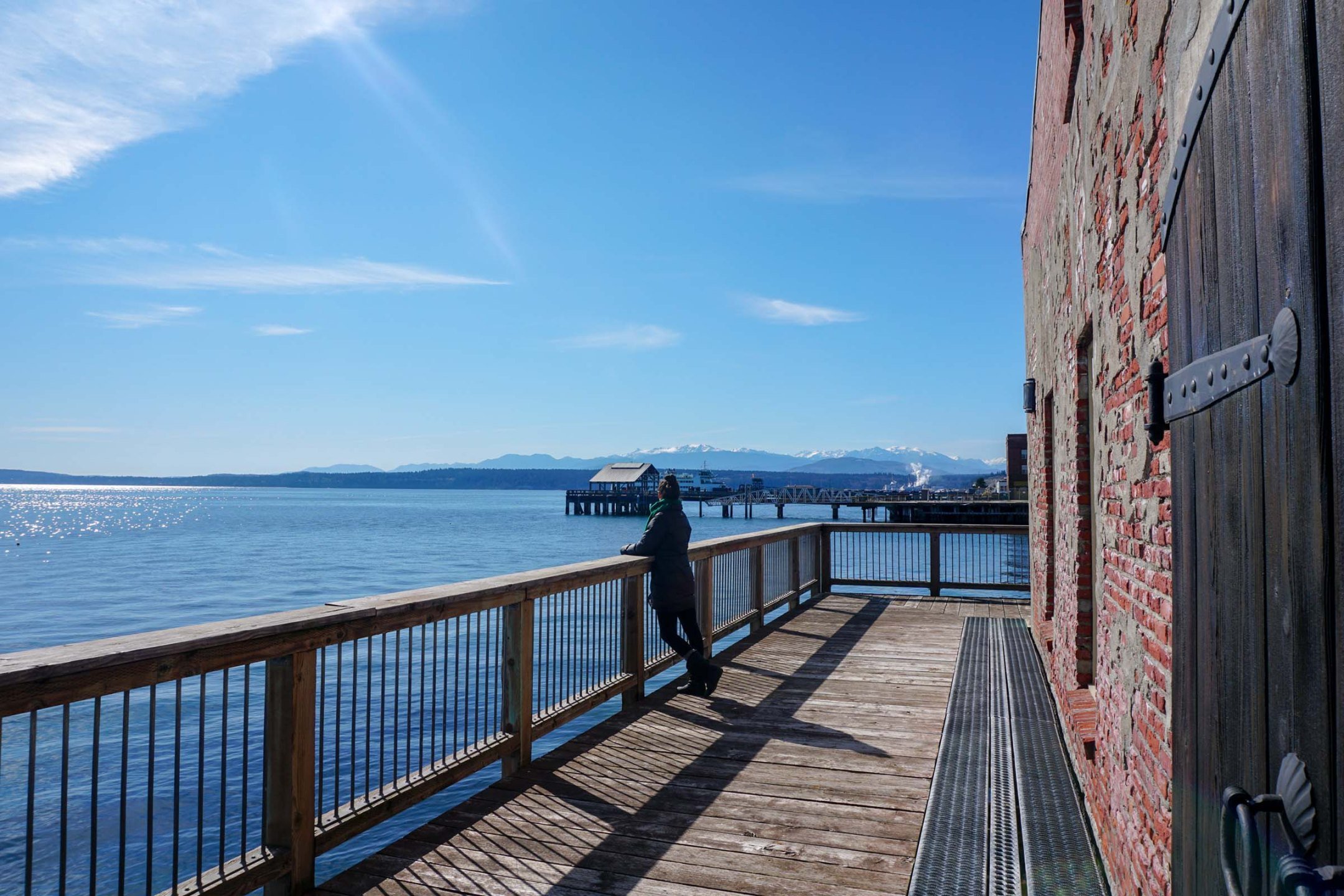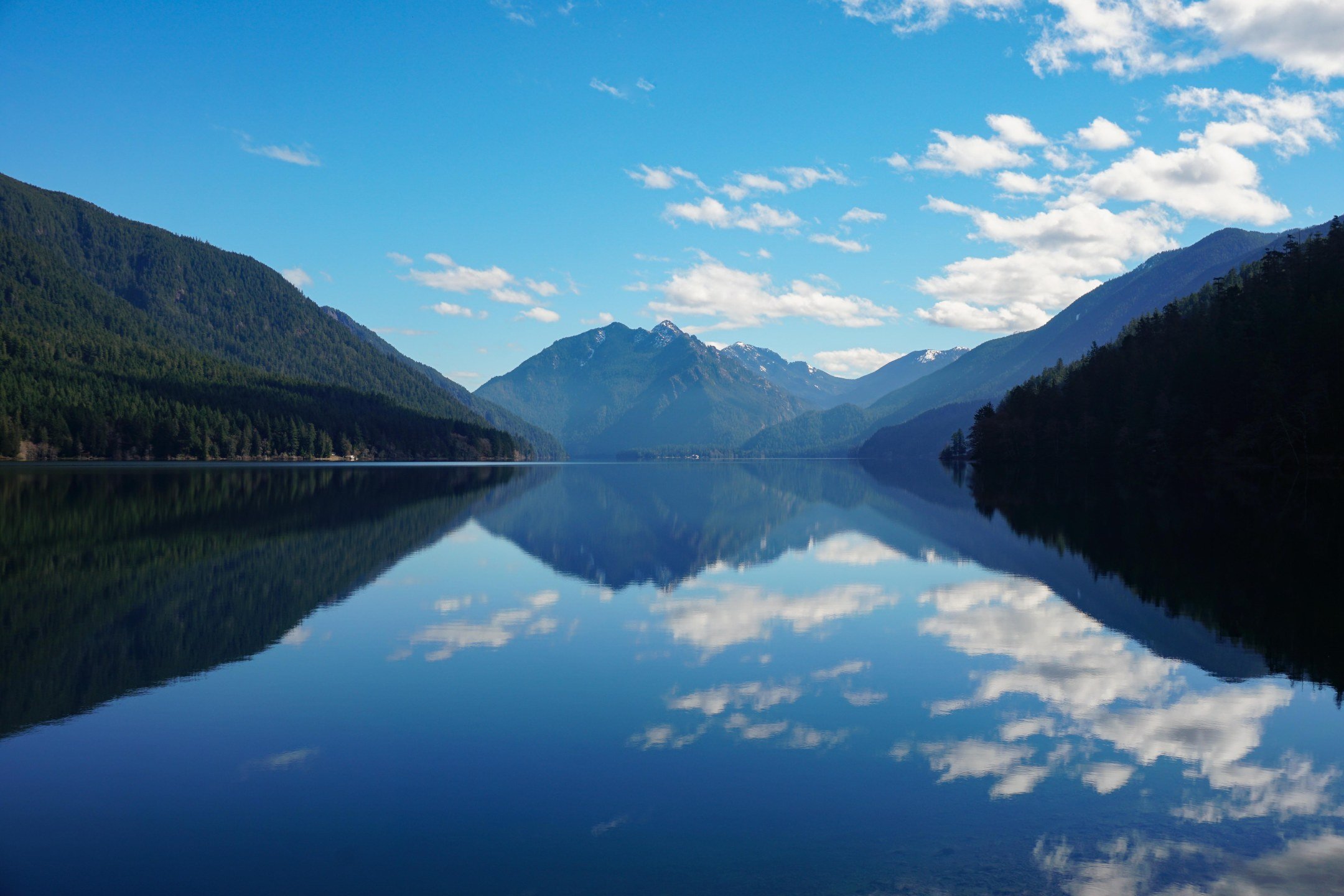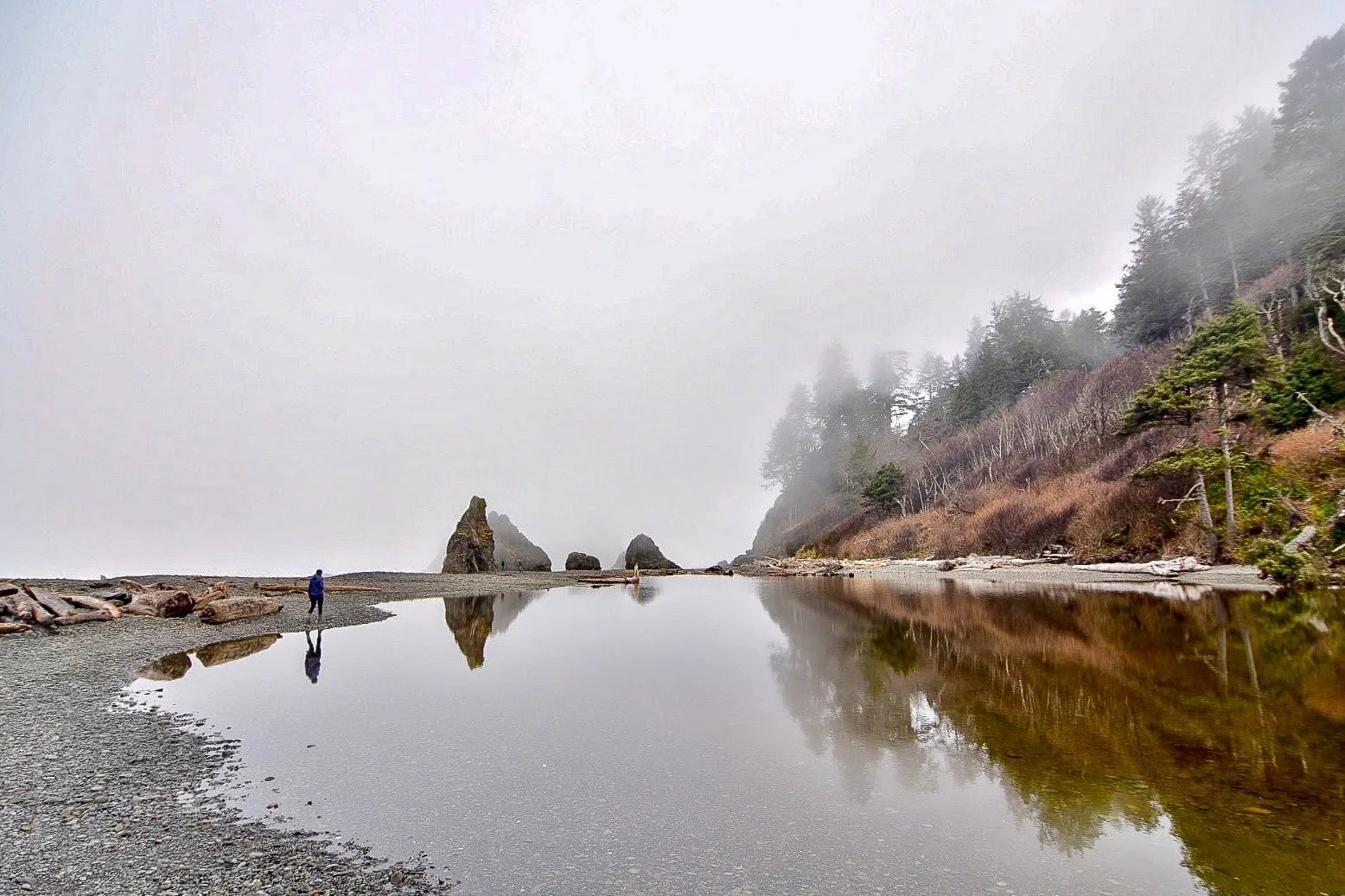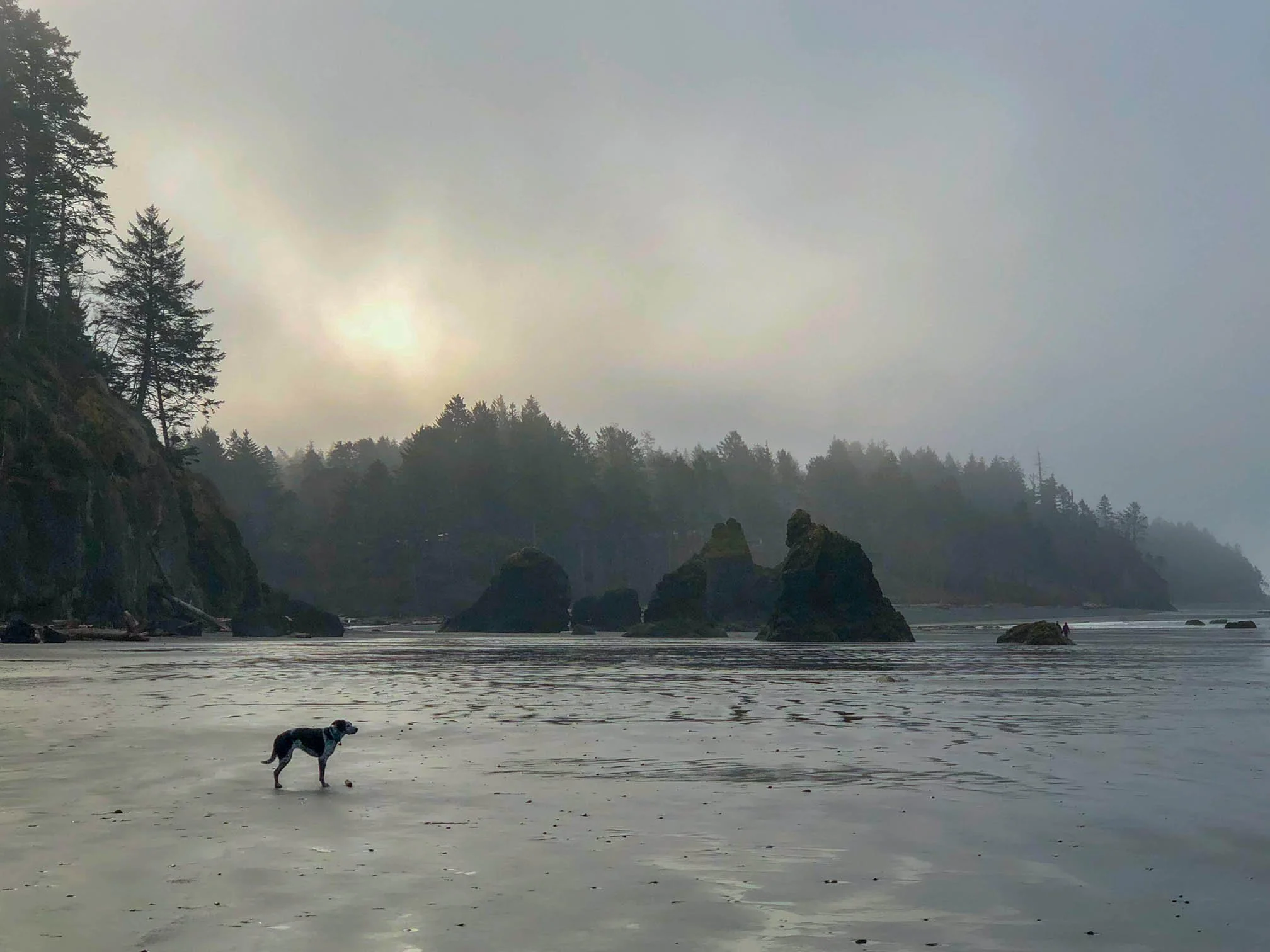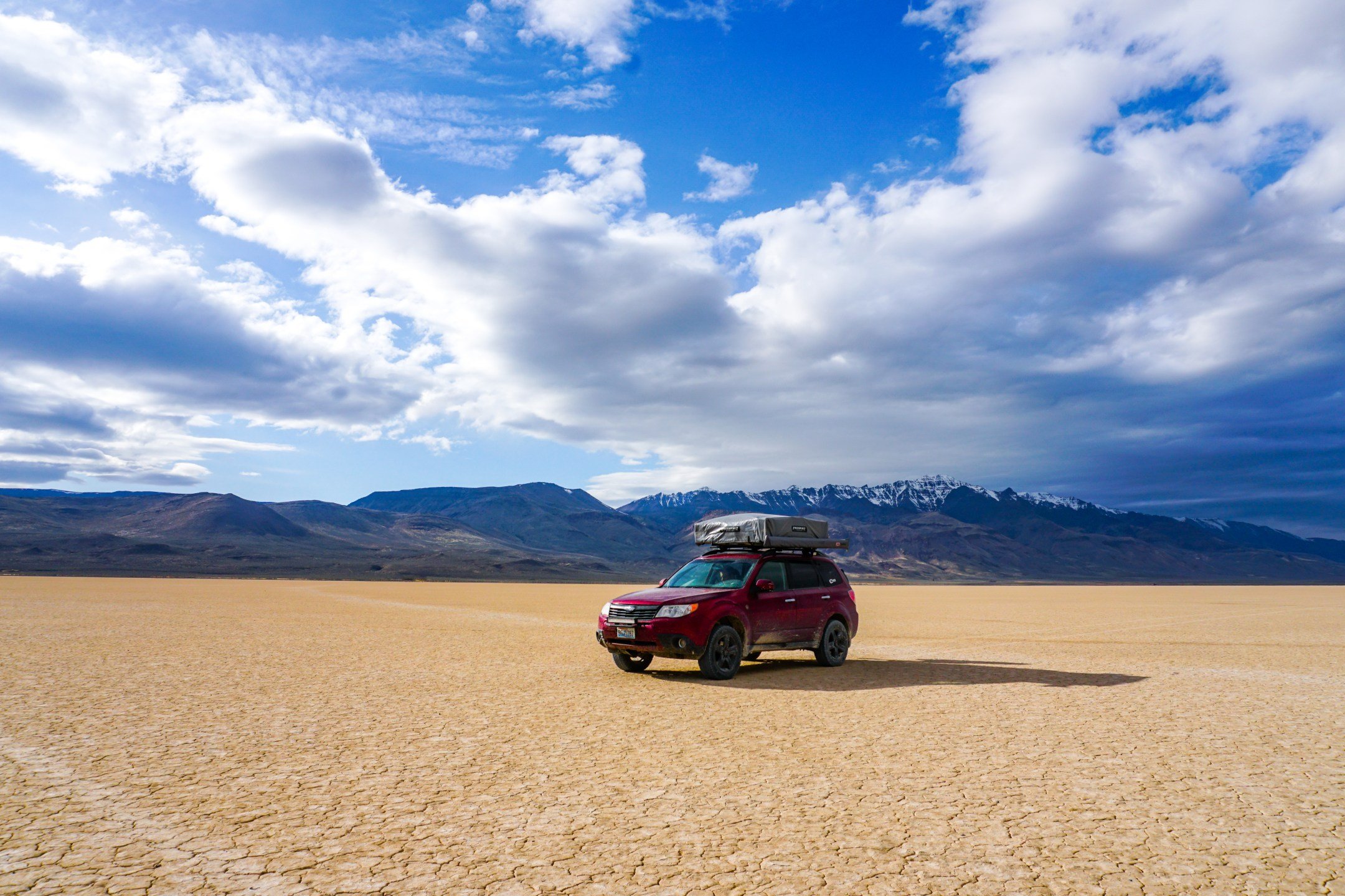Top Things to Do on the Olympic Peninsula
If you’re planning a visit to Seattle, make sure to spend at least a day on the Olympic Peninsula. A short ferry ride from the mainland you’ll find miles of wide sandy beaches, rushing waterfalls, lush rainforests, and enough hiking to satisfy any outdoorsperson. From two Pacific Northwest natives, here are our favorite things to do on the Olympic Peninsula:
Top Things to do on the Olympic Peninsula
Port Townsend
Port Townsend is a great small town to while away an afternoon. The main street is lined with cute little shops, from art galleries to indie bookshops to antique stores – plus plenty of places to get a delicious meal. The pizza at the Tin Brick brought us back to life after a long day of hiking (even better if you order it to go and enjoy it on a bench overlooking the water!). And we keep meaning to go back on a Saturday to have high tea at Cafe Tenby.
Straight of Juan de Fuca views from Port Townsend
Lake Crescent
If you catch Lake Crescent on the right day, the perfect reflection of the sky in the mirror of the lake will take your breath away. It’s on your way if you take Highway 101 across the north end of the peninsula, so take a slow drive and enjoy the view as the road hugs the shore. Or if you have more time to spare, spend a few days there to enjoy some water sports and nearby hikes.
Lake Crescent needs no photoshopping.
Cape Flattery
The northwesternmost point of the contiguous United States, Cape Flattery offers a killer view for minimal effort. An easy 1.2-mile out and back hike leads to several ocean viewpoints. The scenery is stunning, with sea stacks jutting out of the turquoise water and a few hardy trees managing to survive on top. Waves crash into caves carved out of the hillside, and you might spy a bald eagle or a puffin flying overhead.
To get there, take Highway 112 (AKA the Straight of Juan de Fuca Highway, a National Scenic Byway) along the picturesque coast. Keep an eye out for seals sunning themselves on the rocks by the water!
Do keep in mind that Cape Flattery is within the Makah Native American Reservation, so as always be respectful of the land and the indigenous people who call it home. Stop by the museum at the Makah Cultural and Research Center to learn more about the Makah people, where you can also organize tours with a local Makah guide.
Sea stacks from Cape Flattery
Cape Alava
Aaron grew up hiking and camping constantly all over the Pacific Northwest, and the Cape Alava Loop is his favorite hike. The trail begins at Lake Ozette and meanders along a cedar plank boardwalk through the forest, opening up onto the beach. Hikers can turn around there for a 6.2-mile hike, or continue south on the beach to meet up with the Sand Point Trail and make a 9.4-mile loop.
Between the lush evergreen trees surrounding the boardwalk, and rugged beaches punctuated by sea stacks, this hike gives you a taste of all the scenery the Olympic Peninsula has to offer. If you do hike along the beach, you’ll pass ancient petroglyphs at Wedding Rocks. Keep in mind that these carvings are sacred to the Makah Tribe as well as being legally protected archaeological artifacts – so take all the photos you like, but keep your hands to yourself.
Overnight camping is allowed at Capa Alava, and you can’t beat the view of the sunset from the beach. Visit the National Park Service website for details about obtaining camping permits and reservations, as well as safety precautions for the area.
Sunset at Cape Alava
Ruby Beach
We love a long walk on Ruby Beach surrounded by driftwood, towering rocks rising out of the sand, windswept trees, and the rush of the surf. Don’t be disappointed if you find it draped in fog in the morning – it often burns off later in the day, and it’s a beautiful spot even if the skies aren’t clear.
Consult a tide chart to make sure you visit when the water’s low enough to walk along the beach and explore the tide pools for sea stars and anemones.
Even foggy mornings at Ruby Beach are beautiful.
Kalaloch
The iconic Pacific Northwest coast beaches here (uninspiringly dubbed Beach 1, 2, 3 and 4) are much more impressive than their names suggest. Kalaloch is the perfect place for a long walk along the hard-packed sand, listening to the surf.
You can find easy parking and entry to the beach at the Kalaloch Campground, and if you walk just a few minutes north you’ll find a famous local sight. The “Tree of Life” has continued to grow even after erosion ripped the soil right out from under its roots.
The tenacious “Tree of Life” still hanging on
Kalaloch Campground and Kalaloch Lodge are both right by the beach, but you’ll have to plan way ahead to snag a spot. (We rely on some great wild campsites in Olympic National Forest just a short drive away – here’s how we found them).
Low tide at Kalaloch
Olympic National Park
Most likely Olympic National Park is what drew you to the peninsula in the first place, and rightly so! The park has something for everyone, from the glacier-capped Olympic Mountains to the otherworldly Hoh Rainforest. The United Nations declared this park an international biosphere reserve as well as a World Heritage Site.
You could easily spend days exploring the expansive park, which encompasses a million acres. We use the Washington Trails Association app to see all the hikes available and filter them by length and difficulty.
Glacier Meadows within Olympic National Park
Ocean Shores
The beach in the city of Ocean Shores offers a little something different: Driveable access points, where you can steer your car right out onto the sand for a little joyride. It’s how Pacific Northwesterners enjoy a beach even when it’s too rainy and cold to sunbathe!
The beach is technically a state highway and the speed limit is 25 miles per hour. (Fair warning: Drive with caution! It’s easy to get your vehicle stuck in the soft sand.)
A unique PNW way to enjoy the beach at Ocean Shores
Extra Details for Visiting the Olympic Peninsula:
How to Get There:
If you’re coming from Seattle, the easiest way to get to the Olympic Peninsula is to take a 30-minute ride across Puget Sound on the Edmonds-Kingston ferry. You can’t make reservations ahead of time, but ferries leave at least every hour so just drive up and get in line. Be patient – on busy weekends when the weather is nice, you might wait in line for a couple of hours to get back to the mainland. If it comes to that, park your car in the ferry line and enjoy a meal in the charming little town of Kingston.
A car and driver can take the ferry round trip for about $30 (you can walk on as well, but you’ll need a car to reach any of the places we mentioned when you get to the other side). Of course you can avoid the boat ride by taking the long drive around Puget Sound and get to the Peninsula via Olympia, but the ferry is way more fun (not to mention a classic Pacific Northwest experience)!
When to Go:
You can visit the Olympic Peninsula any time of year, but summer in the Pacific Northwest is absolutely glorious. Wear layers and be prepared for rain year-round (just in case!).
Dog-friendly hikes
If you’re like us and you love to travel with your pup, be forewarned that many hikes on the Peninsula are within the Olympic National Park and therefore don’t allow dogs. Fortunately, there are some great dog-friendly hikes in the area as well.
Our pup loves running on the beach and chasing driftwood at Kalaloch, Ruby Beach, and Ocean Shores. Cape Flattery is also-dog friendly (but keep your pup on a leash, as the boardwalk is narrow and there are long drops off the cliffs at the end.)
Jude loves running on the Olympic Peninsula’s wide open beaches
Anyone headed to the Pacific Northwest soon? Let us know if we missed any of your favorite things to do on the Olympic Peninsula!
You Might Also Like:
This post may contain affiliate links. If you make a purchase through our links, we get a small commission at no cost to you. This helps with the cost of keeping this site running – so thank you for clicking through! Don’t worry, we won’t recommend anything we don’t fully believe in.


